- About us
- Support the Gallery
- Venue hire
- Publications
- Research library
- Organisation chart
- Employment
- Contact us
- Make a booking
- Onsite programs
- Online programs
- School visit information
- Learning resources
- Little Darlings
- Professional learning

William Daniell (1769-1837) worked mostly as a topographical draftsman and engraver in aquatint.
4 portraits in the collection

The draftsman and engraver William Evans reproduced many of Sir William Beechey’s portraits including that of King George..
3 portraits in the collection
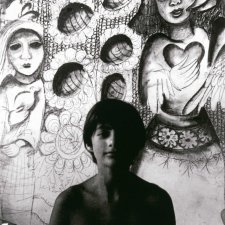
William Mora (1953–2023), art dealer and gallerist, was the eldest son of artist Mirka Mora and restauranteur and gallery owner Georges Mora.
1 portrait in the collection
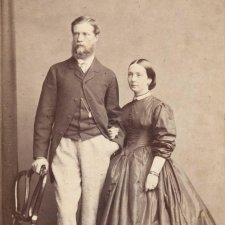
William Robertson junior studied at Oxford University and is said to have been the first Australian to row in an Oxford eight, his team victorious in the Boat Race of 1861.
5 portraits in the collection

William Henry Fernyhough (1809-1849) was a sketcher, silhouette artist, lithographer and draughtsman who immigrated to Sydney in 1836.
13 portraits in the collection
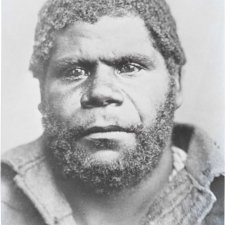
William Lanne (1834-1869), also known as King Billy or William Laney, is said to have been Truganini's third partner.
3 portraits in the collection
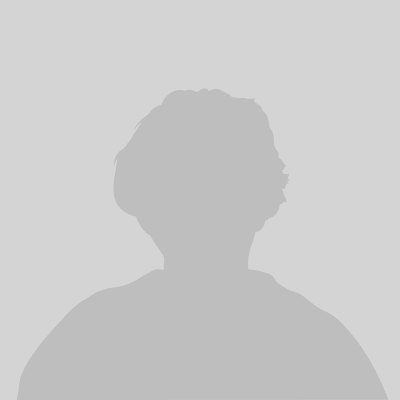
William Nicholas was born near London and is believed to have trained with English printmaker A.M Huffam.
2 portraits in the collection

Sir William Beechey, portrait painter and pupil of Johann Zoffany, was greatly influenced by Sir Joshua Reynolds.
1 portrait in the collection

William Johnson was a commercial photographer who operated a studio on the corner of Pitt and Market Streets in Sydney from the 1890s to the 1920s.
4 portraits in the collection

William Ridley, stipple engraver, worked as an illustrator for a variety of magazines.
5 portraits in the collection

William Buckley (1780-1856), known as 'the wild white man', was transported for life in 1802 for receiving stolen cloth.
1 portrait in the collection

William Hodges (1744-1797) trained from an early age at William Shipley's drawing school at Castle Court in the Strand, and was afterward apprenticed to a landscape painter.
3 portraits in the collection

William Dickinson (1746-1823) was a London-born draughtsman, engraver and print publisher.
1 portrait in the collection
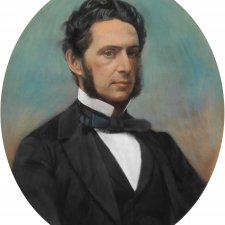
Francis William Barnard Walford (1821–1896), businessman and landowner, was born in Hobart, the son of Barnard Walford (1801–1846), a publican and victualler; and the grandson of Barnard Walford senior (c.
1 portrait in the collection

William Insull Burman came to Victoria in 1853 and worked as a painter and decorator before establishing his own photography business in Carlton in about 1863.
1 portrait in the collection
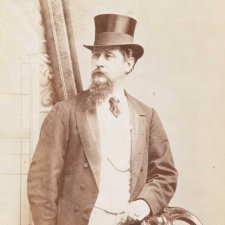
William H. Bardwell, photographer, worked at various premises in Ballarat from 1858 until 1895.
1 portrait in the collection
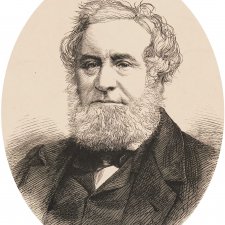
William Howitt (1792–1879), author, arrived in Victoria in 1852 having worked as a farmer, druggist, alderman and writer in England.
1 portrait in the collection

William Owen moved to London from his native Shropshire in 1786 and was apprenticed for seven years to the coach-painter Charles Catton.
1 portrait in the collection

William Paul Dowling (1824–1877) is thought to have studied art in his native Dublin before settling in London, where he worked as a draughtsman while trying to establish himself as a portraitist.
1 portrait in the collection
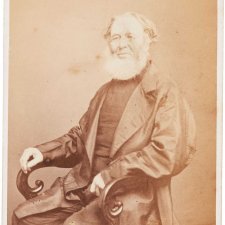
The Reverend William Singleton (c. 1804-1875), Anglican clergyman, graduated from Trinity College Dublin in 1826 and was ordained in the city’s Christ Church Cathedral in 1841.
1 portrait in the collection

William Wentworth (1790-1872) was a landowner, barrister and statesman.
2 portraits in the collection
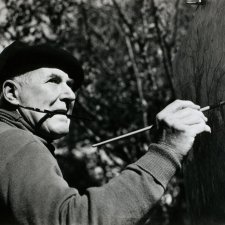
Sir William (Will) Ashton OBE (1881-1963) was the son of James Ashton, who founded Adelaide's Norwood Art School in 1885 and its Academy of Arts in 1895.
1 portrait in the collection

William Robinson AO (b. 1936) is one of Australia's most distinguished and influential contemporary painters, known for his distinctive and prolific output as landscape painter in particular.
3 portraits in the collection

William Strutt arrived in Melbourne in 1850 having undertaken his training in art in Paris in the late 1830s.
1 portrait in the collection

William Latimer (1851-1934) was a portrait photographer who worked in Melbourne in the latter part of the nineteenth century.
1 portrait in the collection

William Edwin 'Wep' Pidgeon, cartoonist, illustrator and painter was born in Paddington and studied art at the JS Watkins School and East Sydney Technical College.
2 portraits in the collection
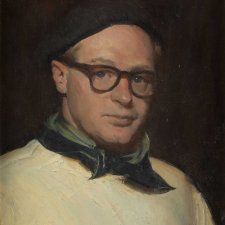
Sir William Dargie CBE (1912–2003) studied at the Melbourne Technical College, and then in the studio of AD Colquhoun from 1931 to 1934.
22 portraits in the collection
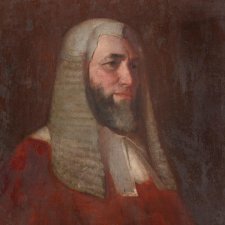
Sir William Windeyer (1834-1897) was a politician and judge. One of the first undergraduates to study at the University of Sydney, he developed a particular interest in education and the rights of women - he was responsible for the Married Women's Property Act of 1879, and was Founding Chairman of the university's Women's College.
4 portraits in the collection
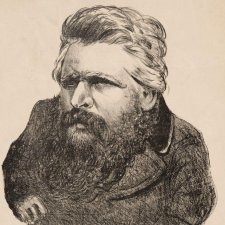
William McLellan (1831–1906), miner and parliamentarian, served on the Victorian Legislative Assembly from 1859 to 1877, and again between 1883 and 1897.
1 portrait in the collection

William Griffith (c. 1808-1870) emigrated to Australia around 1840 and moved to Parramatta with his wife, Susan, whom he had married ten days after landing in Sydney.
1 portrait in the collection

William Howitt, woodcarver and sculptor, began his career in the UK, decorating ships’ interiors and working on ecclesiastical items.
1 portrait in the collection
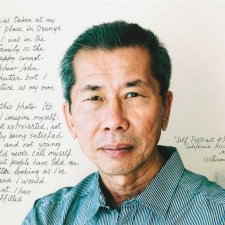
William Yang (b. 1943) is a pre-eminent Australian photographer known for an intensely sustained body of work that examines issues of cultural and sexual identity, and which unflinchingly documents the lives of his friends and community and his own lived experience with curiosity, sensitivity and humour.
15 portraits in the collection
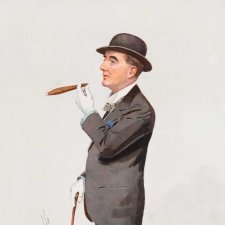
Alfred William Cox (1857–1919), racehorse owner and breeder, was born in Liverpool, England, the son of a successful cotton broker.
1 portrait in the collection
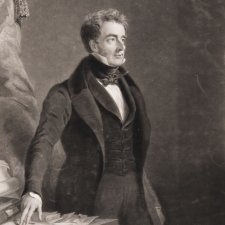
William Lamb, second Viscount Melbourne (1779–1848), statesman, was Prime Minister of Britain in 1834 and from 1835 to 1841.
2 portraits in the collection

William Kelly OAM (b. 1943) was born in Buffalo, New York and was a steelworker before becoming a student at the Philadelphia College of Art.
2 portraits in the collection
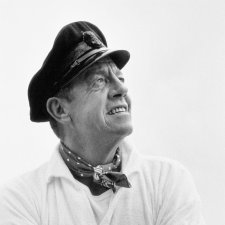
Sir William Northam CBE (1905-1988), yachtsman, won the gold medal in the 5.5 m class event at the 1964 Tokyo Olympics.
1 portrait in the collection
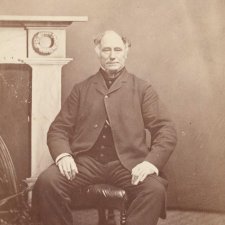
William Robertson (1798-1874), pastoralist and entrepreneur, was a key player in the settlement of Victoria in the 1830s.
3 portraits in the collection
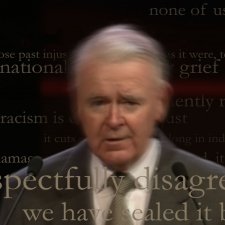
Sir William Deane AC KBE KC (b. 1931), High Court judge, was governor-general of Australia from early 1996 to mid-2001.
1 portrait in the collection
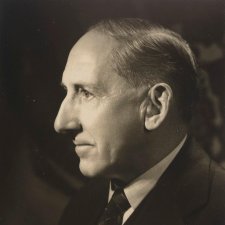
William Dakin (1883-1950), zoologist, studied in his native England and, as an Exhibition scholar, in Kiel, Germany.
1 portrait in the collection
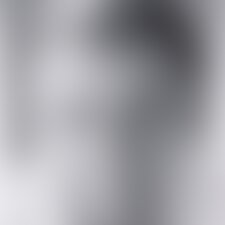
Sir William Dobell (1899–1970), painter, studied art and was apprentice to an architect in Sydney before leaving Australia for Europe in 1929.
10 portraits in the collection

William Macleod, artist and magazine proprietor, attended the Sydney Mechanics’ School of Arts as a young teenager and saw his first illustration published in 1866.
4 portraits in the collection

William Westall (1781-1850), grew up in London and was taught to draw by his elder half-brother Richard, who was drawing master to Princess Victoria.
1 portrait in the collection
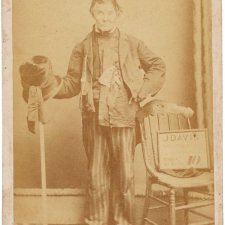
William Francis King (1807-1873), aka 'The Flying Pieman', accomplished a series of bizarre athletic feats during the 1840s.
1 portrait in the collection
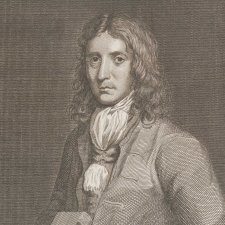
William Dampier (1651-1715), seafarer and writer, had spent a good deal of time at sea as a buccaneer and merchant sailor before he spent three months in 1688 around King Sound (northern Western Australia) on the Cygnet.
1 portrait in the collection

William Bligh (1754-1817), naval officer, was born in Plymouth and first went to sea at around the age of eight.
3 portraits in the collection
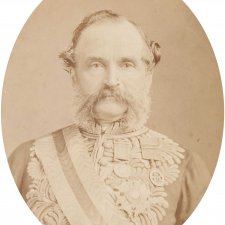
Sir William Francis Drummond Jervois (1821-1897), governor, attended the Royal Military Academy before being commissioned to the Royal Engineers in 1839.
1 portrait in the collection
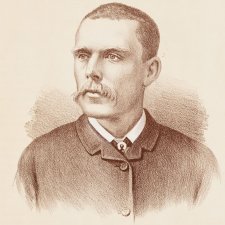
Bill Beach (1850-1935), sculler, came to New South Wales as a young boy with his English parents, who settled at Albion Park, NSW.
1 portrait in the collection

Arthur William Burman was one of the nine children of photographer William Insull Burman (1814-1890), who came to Victoria in 1853.
2 portraits in the collection
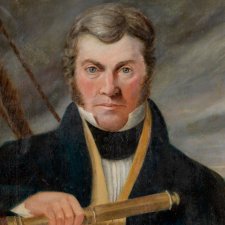
William Kinghorne (1796-1878) came to the colonies from Scotland some time before 1824.
1 portrait in the collection

Edward William Knox (1847-1933), industrialist, was the second of four surviving sons of Sir Edward Knox, founder of the Colonial Sugar Refining Co, and his wife Martha Rutledge (sister of merchant, banker and settler William Rutlege).
3 portraits in the collection
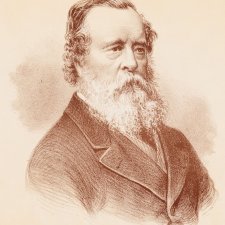
Sir William John Macleay (1820-1891), pastoralist, politician, collector and promoter of science, had just begun to study medicine in his native Scotland when family circumstances dictated his migration to New South Wales.
1 portrait in the collection
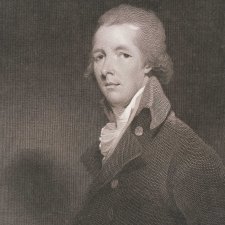
William Pitt the Younger (1759-1806) was Tory prime minister of Great Britain from 1783 to 1801, and of United Kingdom from 1804 to 1806.
1 portrait in the collection

William Wolfe Alais engraved a number of plates for the journal The World of Fashion.
1 portrait in the collection
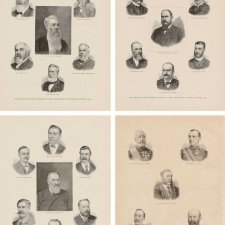
Sir William Hillier Onslow was Governor New Zealand at the Constitutional Convention, Sydney, 1891.
1 portrait in the collection
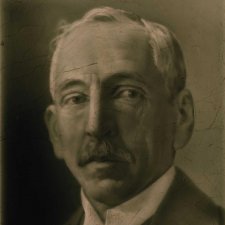
William Morris Hughes (1862-1952) was Labor and National Party Prime Minister of Australia from 1915 to 1923.
4 portraits in the collection
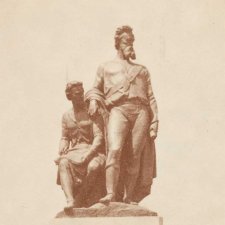
William John Wills (1834-1861) came to Victoria with his brother in early 1853.
3 portraits in the collection
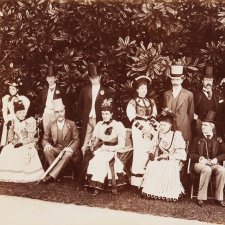
Sir Robert William Duff (1835–1895) was governor of New South Wales from May 1893 until March 1895.
2 portraits in the collection
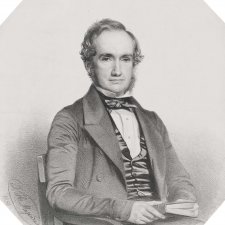
William Henry Harvey (1811-1866), botanist, formed a boyhood passion for natural history which was encouraged at Ballitore School, County Kildare.
1 portrait in the collection
![Opera [Mr William Saurin Lyster] Opera [Mr William Saurin Lyster]](/files/4/a/0/d/i9670-slq.jpg)
William Saurin Lyster (1828–1880) was an Irish operatic impresario who introduced serious opera to the colonies.
2 portraits in the collection
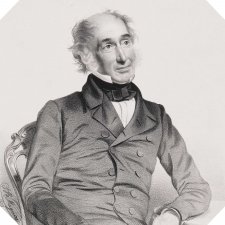
William Jackson Hooker (1785–1865), botanist, was the first Director of the Royal Botanic Gardens, Kew, in which capacity he had significant influence on the study of Australian flora.
1 portrait in the collection
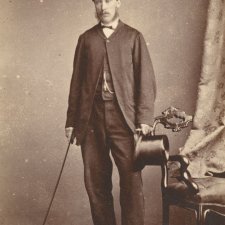
Sir William John Lyne (1844-1913), politician, was a Premier of New South Wales and a minister in the first Australian parliament.
1 portrait in the collection
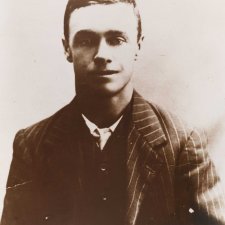
William Edward (Bill) Harney (1895–1962), bushman and raconteur, spent his childhood in Charters Towers and Cairns and started working as a stockman and boundary rider at the age of twelve.
2 portraits in the collection
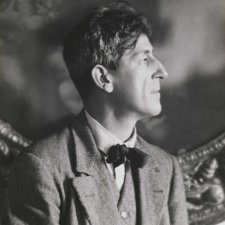
William Hardy Wilson (1881-1955) - or Hardy Wilson, as he styled himself - is regarded as one of the most significant and visionary Australian architects of the twentieth century.
1 portrait in the collection
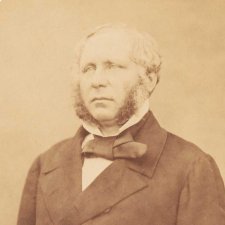
William Clark Haines (1810-1866), first premier of Victoria, was educated at Charterhouse and Caius College Cambridge and practised as a surgeon in England before sailing to Victoria in 1842.
1 portrait in the collection

William Baker Ashton (1800-1854) was the first governor of Adelaide Gaol.
1 portrait in the collection

William John Pickett Bedford (1805–1869) was the eldest of three children of Anglican clergyman, William Bedford (1781–1852), and his wife, Eleanor, and came to Van Diemen’s Land with his family in 1823 following the appointment of his father to a chaplaincy in the colony.
1 portrait in the collection
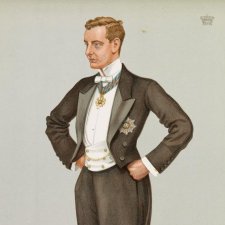
William Lygon, 7th Earl Beauchamp (1872-1938), governor, was appointed to the position of Governor of NSW in 1899.
1 portrait in the collection
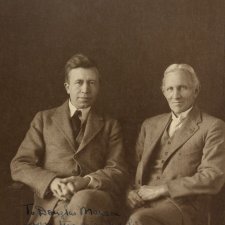
Sir Tannatt William Edgeworth David KBE (1858-1934) was an eminent geologist.
2 portraits in the collection

William Birdwood KCMG KCSI KCB DSO, 1st Baron Birdwood of Anzac and Totnes (1865-1951) commanded the Australian Corps for much of the First World War.
1 portrait in the collection

William Lister Lister (1859-1943), who was born in Sydney but taken to England as an eight-year-old, studied at the Bedford School of Art and in France before moving to Glasgow to study mechanical engineering at the College of Science and Mechanics.
1 portrait in the collection

Adelaide of Saxe-Coburg Meiningen (1792–1849) was the consort of King William IV of England.
1 portrait in the collection

The Photographic Society of Victoria was formed in 1876 to 'bring photographers together in a friendly spirit, in order to advance the art and science of photography in the colony, without any attempt at binding or dictating to members any special trading rules, such as charges for photographs or hours or days for closing or opening their respective establishments.' At the time of the first annual meeting on 9 March 1877 there were 61 members, five whom were ladies.
1 portrait in the collection

Mashman Bros Ltd was established by William and Henry Mashman in Sydney in 1885.
1 portrait in the collection

Reginald Henry Jerrold-Nathan (1889-1979) arrived in Australia from London in 1924, having studied under John Singer Sargent and William Orpen at the Royal Academy, where he was awarded a medal for portrait painting.
2 portraits in the collection
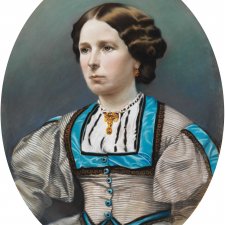
Francis William Barnard Walford (1821–1896), businessman and landowner, was born in Hobart, the son of Barnard Walford (1801–1846), a publican and victualler; and the grandson of Barnard Walford senior (c.
1 portrait in the collection
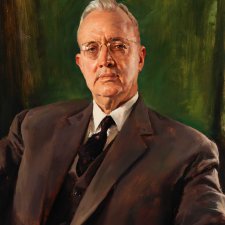
Claude Spurgeon Charlick (1893-1974), businessman, was managing director of the Adelaide firm Charlick Ltd for nearly forty years.
1 portrait in the collection
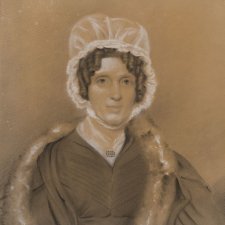
Jessie Whyte (née Walker, 1779–1864). Born in Berwickshire, Scotland, Jessie married George Whyte (d.
1 portrait in the collection

William Read was active in London in the 1820s and 1830s and appears to have worked mainly as an engraver of portraits.
1 portrait in the collection

John Lucas started his career as an apprentice to the engraver Samuel William Reynolds.
1 portrait in the collection
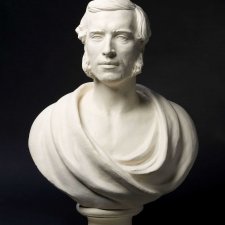
Dr Arthur Martin a’Beckett FRCS (1812-1871) surgeon and New South Wales parliamentarian studied at London University from 1831 before undertaking a residency in Paris, centre for innovation in the practice of hygiene, pathological anatomy and physiopathology.
2 portraits in the collection

Terry Clune (b. 1932), gallerist, established Terry Clune Galleries with Frank MacDonald at 59 McLeay Street Potts Point in 1957.
1 portrait in the collection
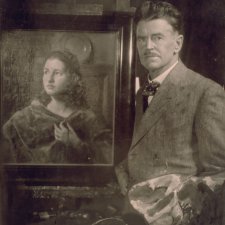
William Beckwith (Bill) McInnes (1889–1939), artist, was only fourteen when he began studying drawing under Frederick McCubbin at the National Gallery School in Melbourne, before moving to painting.
5 portraits in the collection

Elizabeth Fairfax (née Jesson, 1778–1861), colonial free settler, was born in Birmingham and around 1800 married William Fairfax, whose family had previously held estates in Barford, Warwickshire.
1 portrait in the collection

Sonia McMahon (1932-2010) née Hopkins, was the wife of William McMahon, Australian prime minister in 1971-1972.
1 portrait in the collection
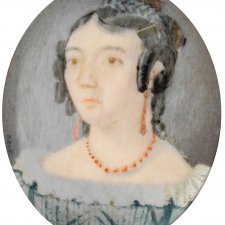
Elizabeth Roberts (1812–1833) was the daughter of Warwickshire-born William Roberts (1754–1819) and his wife, Jane (née Longhurst, c.
1 portrait in the collection

Thomas Cook produced portraits for the Gentleman's Magazine and frontispieces for book publishers, as well as a number of single plates in different genres for Boydell.
1 portrait in the collection

Fradelle & Marshall was a photographic and miniature-painting partnership between Albert Eugene Fradelle & William Shury Marshall, who maintained two studios in Regent Street, Westminster, London from 1872 to 1876.
1 portrait in the collection

James Freeman, who is credited with bringing the wet-plate photographic process to New South Wales, arrived in Sydney in 1854 to join his brother William, who had arrived the year before.
9 portraits in the collection
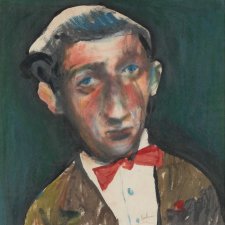
Georges Mora (1913-1992) was born Gunter Morawski to a Leipzig Jewish bourgeois family of Polish descent.
1 portrait in the collection

Meg Padgham studied at East Sydney Technical College and the Meldrum School.
1 portrait in the collection

Saul Solomon (1836–1929) had a studio in Main Road, Ballarat from 1857 to 1862, and worked in partnership with William Bardwell at 29 Sturt Street, Ballarat until 1874.
1 portrait in the collection

Sean Hutton was born in Edinburgh, Scotland, and lives and works in Sydney.
1 portrait in the collection
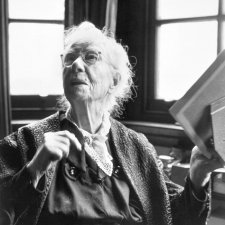
Dame Mary Gilmore DBE (1865–1962), poet, journalist and social reformer, was born near Goulburn and had an itinerant childhood as her father moved the family around New South Wales for work.
3 portraits in the collection
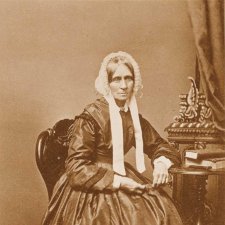
Maria Windeyer (née Camfield, 1795–1878), landowner, emigrated to New South Wales in 1835 with her husband Richard, a barrister, and their infant son, William Charles.
2 portraits in the collection

Thomas Heathfield Carrick, miniature painter, grew up in Carlisle, where he trained and traded as a chemist, painting miniatures in his spare time.
1 portrait in the collection
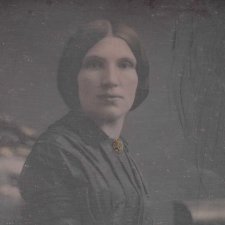
Martha Knox (née Rutledge, d. 1903), was the sister of merchant, landowner and banker William Rutledge.
1 portrait in the collection

Ernest Buckmaster grew up in country Victoria, where his facility for art was recognised early on.
1 portrait in the collection
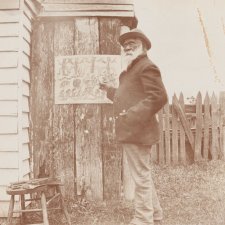
Beruk (William Barak) (1824-1903), an elder of the Wurundjeri clan of the Woi-worung, was the most famous Aboriginal person in Victoria in the 1890s.
1 portrait in the collection

Victor Greenhalgh (1900-1983) was a sculptor and teacher who greatly influenced tertiary art education; he was one of the first Victorian sculptors to adopt a modern style.
5 portraits in the collection

Robert Dunkarton, engraver and portrait painter, served his apprenticeship with mezzotint engraver William Pether.
1 portrait in the collection

David Collins (1756–1810), lieutenant-governor, began his career in the British Navy, rising to the rank of captain before being returning to dry land and being placed on half-pay in late 1783.
1 portrait in the collection
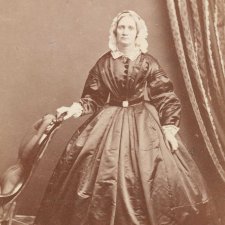
Margaret Robertson (née Whyte, 1811–1866) was the daughter of settlers George and Jessie Whyte, who emigrated to Van Diemen’s Land from Scotland in 1832.
4 portraits in the collection
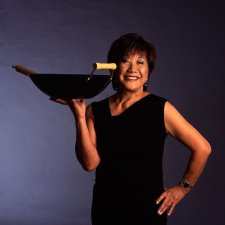
For many years Elizabeth Chong has shared her love of Chinese cuisine with Australian audiences.
1 portrait in the collection

Elliott & Fry, a photography studio and photographic film manufacturer, was founded in 1863 at 55-56 Baker Street, London by Joseph John Elliott and Clarence Edmund Fry.
2 portraits in the collection

Charles Alfred Woolley (1834-1922), photographer and sketcher, ran a studio on Macquarie Street in Hobart from 1859 to 1870, producing numerous portraits along with views and stereographs of Hobart and surrounding areas.
6 portraits in the collection
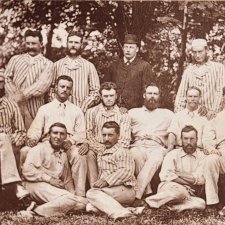
The ‘first Australian first-class cricket team to tour England and North America’ was in fact the second Australian cricket side to contest matches internationally (a team of Indigenous players having done so in 1868), but it is considered the first official national representative team to tour overseas.
1 portrait in the collection

Luigi Schiavonetti, Italian reproductive engraver and etcher, studied art for several years before being employed by an engraver named Testolini to execute imitations of Bartolozzi's works, which Testolini passed off as his own.
1 portrait in the collection

James Quinn was born in Melbourne and trained at the NGV School before studying in Paris from the mid-1890s to 1902.
1 portrait in the collection
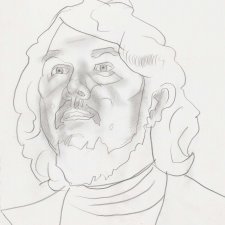
Sasha Grishin AM (birth date undisclosed) is the Sir William Dobell Professor of Art History at the Australian National University.
1 portrait in the collection
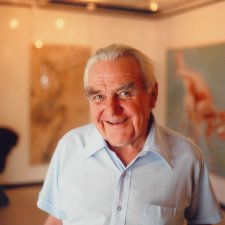
Rudy Komon (1908-1982) was an art dealer and gallery director. After working as a journalist in Czechoslovakia, where he served with the Czech resistance during the war, he emigrated to Sydney and opened an antique store.
3 portraits in the collection

Photographers Andrew Taylor and George Taylor opened their first studio in Cannon Street in east London in 1866.
1 portrait in the collection

Henry Bryan Hall grew up in England and began his trade as an apprentice to the engravers Benjamin Smith and Henry Meyer.
1 portrait in the collection

Liverpool-born William Buelow Gould (1803-1853) had worked as a draftsman for the London printmaker, Rudolph Ackermann, and as a painter for a Staffordshire pottery before being transported to Van Diemen’s Land for theft in 1827.
1 portrait in the collection
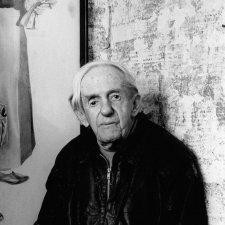
Joshua Smith studied sculpture with Rayner Hoff and took classes in drawing and painting at Julian Ashton's Sydney Art School.
6 portraits in the collection
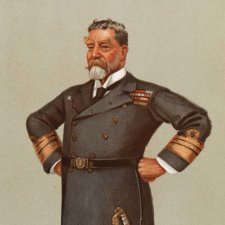
Sir Harry Holdsworth Rawson GCB GCMG (1843–1910) was appointed governor of New South Wales in January 1902 having distinguished himself in the course of various conflicts as an officer of the Royal Navy.
1 portrait in the collection

Laura Praeger (née Blundell) was born in Tunbridge Wells, Kent, and was about twelve years old when her father brought his family to Australia, settling in Queensland.
1 portrait in the collection

Edward MacMahon CBE (1904–1987), surgeon, studied medicine at the University of Sydney and completed his residency at the Sydney Hospital.
1 portrait in the collection

Alphonse Pellion, artist and naval draughtsman, was a midshipman aboard l'Uranie on Louis de Freycinet's three-year scientific and ethnographic expedition around the world in 1817-1820.
2 portraits in the collection
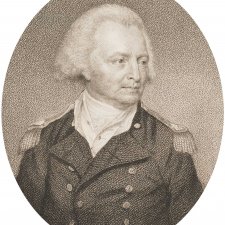
Sir George Young (1732–1810), naval officer, first went to sea at the age of fourteen and saw action in Europe and India before joining the East India Company’s marine in 1753.
1 portrait in the collection

Johannes Heyer was born at Germantown (Grovedale) near Geelong in Victoria.
1 portrait in the collection

Samuel Johnson Woolf, American painter, lithographer and illustrator, was born in New York City and named after the English essayist Samuel Johnson.
1 portrait in the collection

Roderick Shaw (1915-1992) is perhaps best known for his worker paintings of the social realist school, such as Cable Layers (in the Art Gallery of NSW).
2 portraits in the collection
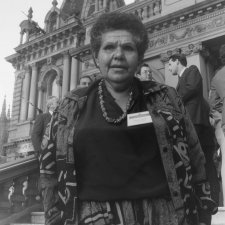
Shirley 'Mum Shirl' Smith AO OBE (1921–1998), humanitarian, was a Wiradjuri woman.
1 portrait in the collection
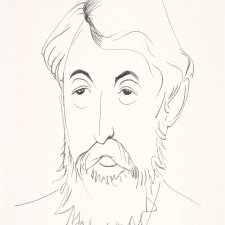
Mungo MacCallum (1941–2020) was one of Australia's best-known political journalists.
1 portrait in the collection

Nick Mourtzakis (b. 1951) is Melbourne-based artist and teacher. Mourtzajkis migrated to Melbourne with his Greek family in the early 1950s and trained at the Preston Institute of Technology and Mercer House Teachers' College in the early 1970s.
3 portraits in the collection

Thomas Phillips was born in Dudley, Warwickshire and initially trained as a glass painter before moving to London, aged 20, with a letter of introduction to the painter Benjamin West.
6 portraits in the collection

Julian Smith, surgeon and photographer, came to Australia with his family from England at the age of three.
2 portraits in the collection
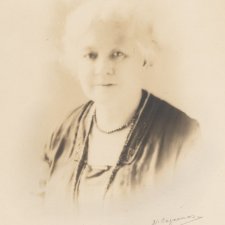
Elizabeth Sarah Ellen Carter (née Hill, 1845-1927) was one of the eight children born to Sydney cabinetmaker and undertaker John Hill jnr and his wife Elizabeth - the step-daughter of ex-convict boatman, John Cadman.
1 portrait in the collection

Tasmanian-born Andrew Bonneau (b. 1981) lives and works in Cairns, Queensland.
2 portraits in the collection

Jessie Robertson (1835–1849) was the eldest of the seven children of pastoralist and businessman, William Robertson (1798–1874), and his wife Margaret (née Whyte, 1811–1866).
1 portrait in the collection
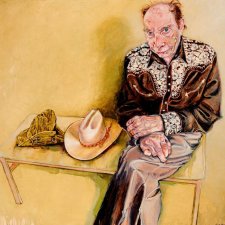
Chadwick William Morgan OAM (1933-2025) performed comic country songs for more than 60 years.
2 portraits in the collection
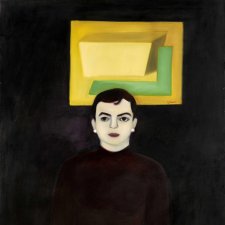
Louise Forthun (b. 1959), artist, works primarily in painting and printmaking and has an aesthetic and conceptual focus on the architectural landscape of Australia's urban environments.
1 portrait in the collection
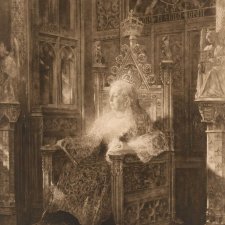
Victoria (1819–1901) was Queen of the United Kingdom of Great Britain and Ireland from 1837 until her death in 1901.
8 portraits in the collection

George Richmond, son of the miniature painter Thomas Richmond, grew up in London, took early artistic instruction from his father and enrolled in the Royal Academy Schools in 1824.
1 portrait in the collection

English lithographer and watercolourist Henry Heath Glover (c. 1810-1858) emigrated to South Australia in 1848 with his two sons - one of whom, Henry Heath Glover Junior (1828-1904) was also an illustrator and printmaker.
1 portrait in the collection
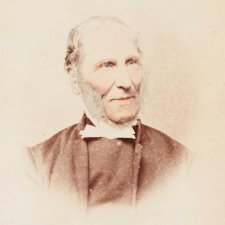
The Reverend Edward Puckle (c. 1800-1898), Anglican clergyman, took holy orders in Exeter and officiated in Cornwall before sailing on the Randolph to Canterbury, NZ in 1850.
1 portrait in the collection

Will (William Henry) Dyson, cartoonist, caricaturist, writer and draughtsman, was born in Alfredtown, near Ballarat, and studied for a short time in Melbourne, where he worked closely with his older brother Ambrose.
11 portraits in the collection

Donald Cameron (1927-2018), Melbourne-born painter and teacher, attended Scotch College before beginning work as an engraver for the Commonwealth Bank in 1943.
2 portraits in the collection

Sir Thomas Lawrence (1769-1830) was one of the leading portrait painters of the Georgian era.
8 portraits in the collection
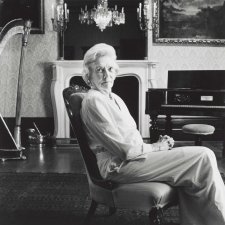
Dame Helen Blaxland DBE (1907–1989), conservationist and fundraiser, studied at the Julian Ashton School of Art in Sydney.
1 portrait in the collection

Jim Paterson, painter, printmaker and sculptor, was born in Melbourne and completed his diploma in Fine Arts at Prahran Technical College in 1969.
1 portrait in the collection
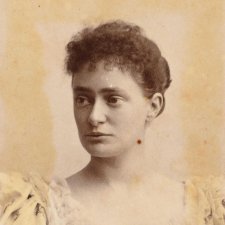
Jane Windeyer (1865–1950) was the second eldest daughter of politician and judge Sir William Charles Windeyer (1834–1897) and his wife, Mary (née Bolton, 1837–1912), a leading campaigner for women’s rights.
2 portraits in the collection
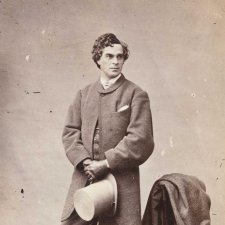
Barry Sullivan (1821-1891), English actor, performed on the Melbourne stage between 1862 and 1866.
1 portrait in the collection
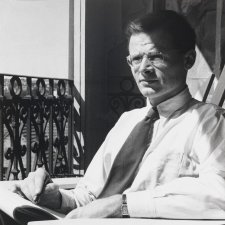
Klaus Friedeberger (1922-2019) fled Germany for England at the age of sixteen, and the next year found himself on the Dunera bound for internment in Australia.
3 portraits in the collection
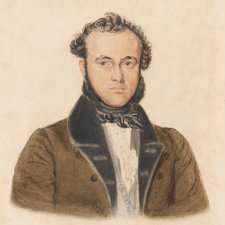
Richard Windeyer (1806-1847), journalist, barrister and politician, was the eldest of the ten children born to Charles Windeyer and his wife Ann Mary and remained in England when the rest of his family went to New South Wales.
3 portraits in the collection
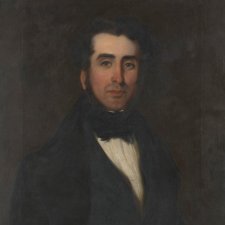
Robert Quayle Kermode (1812-1870), politician, was born on the Isle of Man and educated at Castletown.
1 portrait in the collection
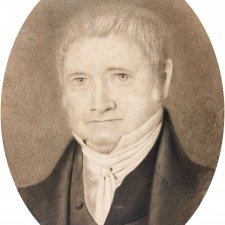
Richard Rouse (1774-1852), grazier and landowner, came to New South Wales in 1801 as a free settler with his wife Elizabeth (née Adams, 1772-1849) and the first two of their nine children.
1 portrait in the collection
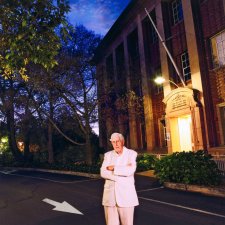
Basil Hetzel AC (1922-2017), medical scientist, came to South Australia as a three year old and was educated - like Nobel Prize winners William Lawrence Bragg, Howard Florey and Robin Warren - at St Peter's College and the University of Adelaide.
1 portrait in the collection

Charles Abraham, son of a London architect, trained at the Royal Academy schools under the sculptor Sierier, and for a further three years in Paris and Rome.
1 portrait in the collection

Elizabeth Rouse (née Adams, 1772–1849), colonial spouse, arrived in New South Wales as a free settler in 1801 with her husband, Richard Rouse (1774–1852) and their first two children, one of whom had been born on the voyage out.
1 portrait in the collection
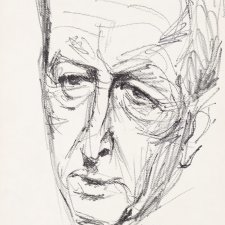
Hon Les Bury CMG (1913-1986), politician, was member for Wentworth in Sydney’s eastern suburbs from 1956 to 1974.
1 portrait in the collection
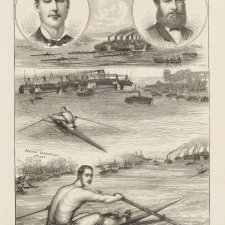
Edward 'Ned' Trickett (1851- 916), sculler and hotelier, was the best sculler in New South Wales by 1875.
1 portrait in the collection
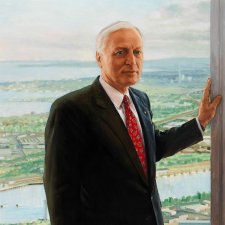
Brian Thorley Loton AC (1929–2022) was chairman of BHP from 1992 to 1997.
2 portraits in the collection
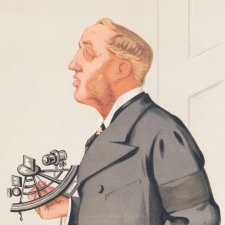
Thomas Brassey, 1st Earl Brassey (1836–1918), politician and governor, studied law and modern history at Oxford, but abandoned law for a career in politics two years after being called to the Bar.
1 portrait in the collection
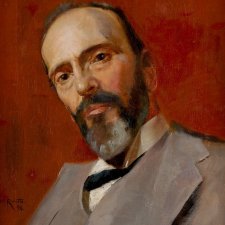
Sir Alexander Campbell Onslow (1842-1908), judge, was educated at Cambridge and practised law in England before being appointed attorney general of British Honduras in 1878.
1 portrait in the collection
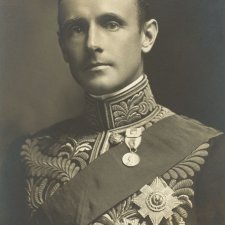
Rt Hon John Adrian Louis Hope KT GCMG GCVO PC, 7th Earl of Hopetoun (1860–1908) was the first governor general of Australia.
3 portraits in the collection
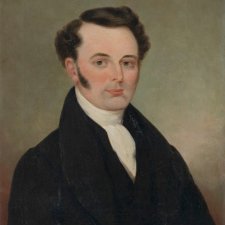
Francis Tuckfield (1808-1865), Wesleyan missionary, was eighteen years old when, having worked as a miner and a fisherman, he decided to become a preacher.
1 portrait in the collection
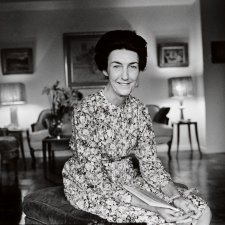
Shirley Hazzard (1931-2016) writer, spent her childhood in Sydney but left with her parents at the age of sixteen for South East Asia and New Zealand.
1 portrait in the collection
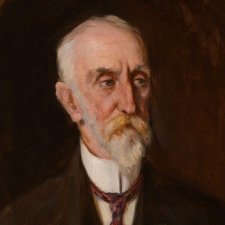
Frederick Eccleston du Faur (1832–1915), environmentalist, public servant and arts patron, came to Australia from his native London in 1853.
1 portrait in the collection

James Alipius Goold (1812-1886), first Catholic bishop and archbishop of Melbourne, volunteered for service in New South Wales having studied in Rome and Perugia.
2 portraits in the collection

Bradley & Rulofson was a partnership between photographers Henry W Bradley (1813–1891), a native of North Carolina, and Canadian-born William H Rulofson (1826–1878).
1 portrait in the collection
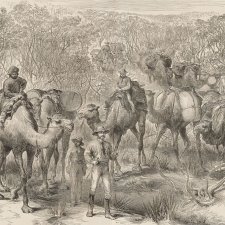
Ernest Giles (1835-1897), explorer, came to Australia at the age of fifteen, settling in Adelaide.
1 portrait in the collection
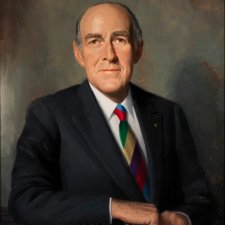
Leonard Ian Roach (1925-2003), founding chairman of the Australian Stock Exchange, initiated the amalgamation of six stock exchanges, one in each State capital, into an Australian Stock Exchange in the mid-1980s.
1 portrait in the collection

Julian Rossi Ashton CBE (1851-1942), art teacher, artist and critic, trained in art in London and at the Académie Julian in Paris before coming to Australia to work on the Illustrated Australian News in 1878.
4 portraits in the collection

Elaine Haxton (1909-1999), painter, graphic artist and theatre designer, grew up in Sydney.
1 portrait in the collection
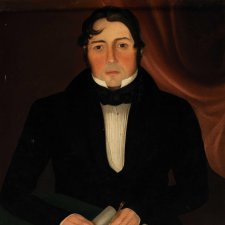
John Eason (1799–1858) was a shipwright who worked in Van Diemen’s Land during the 1830s, 1840s and 1850s.
1 portrait in the collection
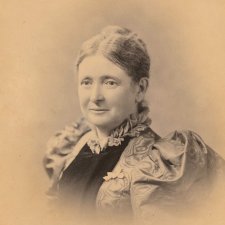
Mary Windeyer (née Bolton, 1837-1912), women's rights campaigner, was one of the nine children of Robert Thorley Bolton, a clergyman who emigrated to New South Wales in 1839.
3 portraits in the collection
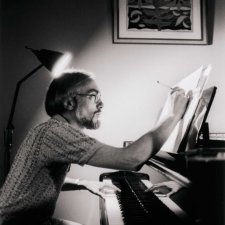
Nigel Butterley AM (1935-2022) was one of the foremost Australian composers and pianists of his generation.
1 portrait in the collection
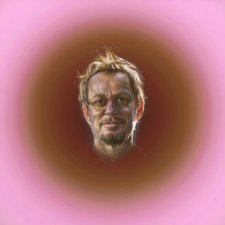
Richard Tognetti AO (b. 1965), violinist, conductor and composer, trained with William Primrose in Wollongong and Alice Waten in Sydney before undertaking further studies with Igor Ozim in Switzerland.
2 portraits in the collection

Peter Wegner first participated in a group exhibition in 1977, when he had had no art training.
7 portraits in the collection
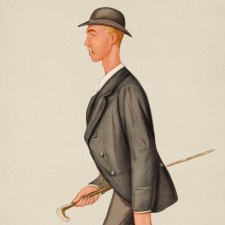
Henry Searle (1886–1889), a sculler known as the ‘Clarence River Comet’, took up rowing as a boy as a means of getting himself and his siblings to and from school.
1 portrait in the collection

Carol Jerrems (1949–1980) was a photographer known for her intimate portraits of friends, lovers and others occupying the progressive social and creative circles in which she moved.
8 portraits in the collection

Charles Robert Wynn-Carrington (1843–1928), 1st Marquess of Lincolnshire, landowner and Liberal politician, was governor of New South Wales in the late 1880s.
2 portraits in the collection

Sir Edward Eyre Williams (1813–1880), judge and barrister, arrived in Port Phillip in 1842 having been admitted to the Bar in London nine years earlier.
1 portrait in the collection

Miriam Hyde AO OBE (1913-2005), composer, recitalist, teacher, examiner, poet, lecturer and writer of numerous articles for music journals, studied first with her mother and then with William Silver at the Elder Conservatorium in Adelaide.
1 portrait in the collection

Peter Booth (b. 1940) grew up in the English steel mill town of Sheffield, bike-riding on the nearby moors.
1 portrait in the collection
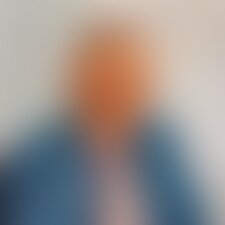
Hardtmuth Lahm (1912-1981), commercial artist and cartoonist, came to Australia from Estonia as a sixteen-year-old.
1 portrait in the collection

Clifton Pugh AO was one of Australia’s best-known artists of the 1960s, 1970s and 1980s, and one of its leading advocates for the arts.
12 portraits in the collection

Nancy Menetrey (née Wilkinson) (1924-2024) was born in Sydney in 1924.
1 portrait in the collection
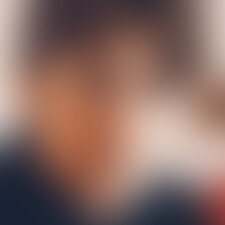
Janet Dawson (b. 1935), painter, printer, teacher and stage designer, is known for her contribution to abstract art in Australia.
10 portraits in the collection
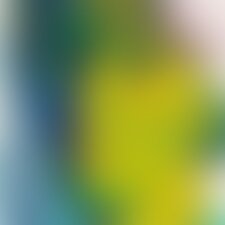
Jean Appleton (1911–2003), painter and art teacher, studied at the East Sydney Technical College, completing a diploma in drawing and illustration in 1932.
5 portraits in the collection
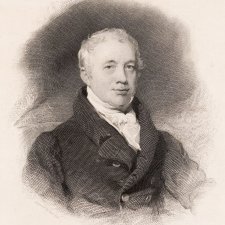
Alexander McLeay (aka Macleay) (1767-1848), public servant and entomologist, acquired an interest in insects while working as a clerk in London.
1 portrait in the collection
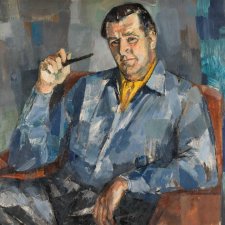
Sir Douglas Frank Hewson Packer KBE (1906-1974), media proprietor, grew up in Sydney and became a cadet journalist on the Daily Guardian, owned by his father RC Packer, in 1923.
2 portraits in the collection
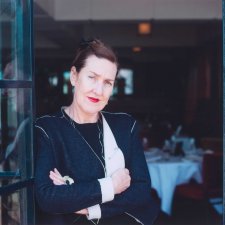
Michelle Garnaut AO studied at Monash University before travelling widely in the early 1980s, returning to Melbourne to complete catering qualifications at William Angliss College.
1 portrait in the collection

George William Perry (1824–1900) was born in London and arrived in Victoria via South Africa around 1852.
2 portraits in the collection
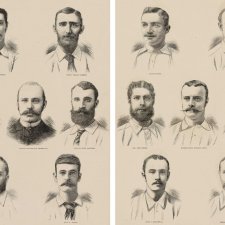
The Australian cricket team of 1882 was the third side to tour England and the team whose defeat of England at The Oval in August of that year initiated the 'The Ashes' Test series.
1 portrait in the collection
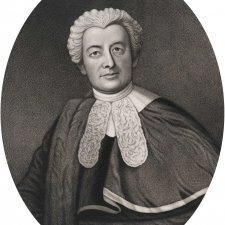
Sir James Dowling (1787-1844), judge, worked as a parliamentary reporter before he was called to the Bar in London in May 1815.
1 portrait in the collection
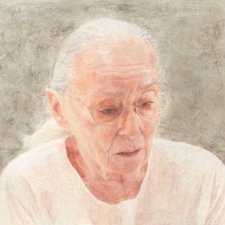
Jenny Sages (b. 1933), artist, was born to Russian Jewish parents in Shanghai and came to Australia with her family in 1948.
34 portraits in the collection
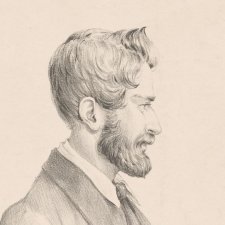
Friedrich Wilhelm Ludwig Leichhardt (1813-c. 1848) went to school and university in Germany but the range of his interests was such that he never actually graduated (he was later called Dr Leichhardt in recognition of his broad scholarship).
1 portrait in the collection

Hilary McPhee AO (b. 1941), writer and editor, began her career at Meanjin before starting a small magazine, Theatre.
1 portrait in the collection

Tom Roberts (1856–1931), artist, came to Australia from England at the age of 13, but returned eight years later to study art in London.
9 portraits in the collection
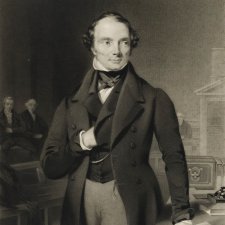
John Russell, 1st Earl Russell KG GCMG PC (1792 –1878) was Secretary of State for War and the Colonies from 1839 to 1841 and served twice as Prime Minister of Great Britain, in 1846-1852 and 1865-1866.
1 portrait in the collection

George Mealmaker (1768–1808), convict and activist, became involved in radical politics in his native Dundee in the 1780s.
1 portrait in the collection
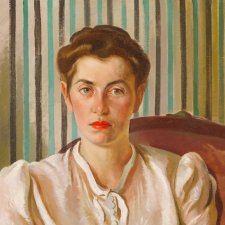
Rachel Roxburgh (1915–1991), artist, conservationist and architectural historian, grew up in Sydney's eastern suburbs and studied art at East Sydney Technical College and the Adelaide Perry Art School in the 1930s.
1 portrait in the collection
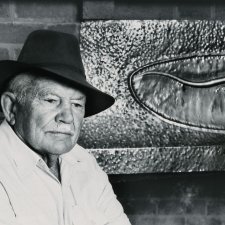
RM (Reginald Murray) Williams AO CBE (1908-2003), saddlery, boot and clothing manufacturer, miner and author, moved to Adelaide from his birthplace near the Flinders Rangers when he was 10.
1 portrait in the collection
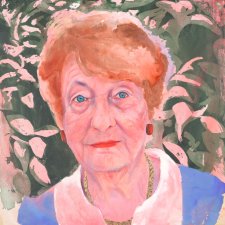
Dr Helen Caldicott (b. 1938), physician, author and activist, was born Helen Broinowski in Melbourne and gained her degree in Medicine from the University of Adelaide in 1961.
1 portrait in the collection

David Mitchell (1829-1916), builder, contractor and businessman, arrived in Melbourne in mid-1852 in the Anna.
1 portrait in the collection
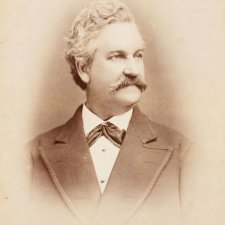
Henry (Harry) Edwards (1827–1891), actor and entomologist, arrived in Melbourne in 1853 after a short-lived attempt at studying for a career in law.
1 portrait in the collection
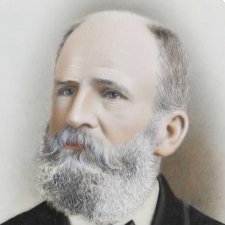
John Dunn (1802-1894), flour miller and philanthropist, eked out a mean living as a mill manager in England before migrating to South Australia with his wife and son in 1840.
1 portrait in the collection

Thomas Griffiths Wainewright (1794-1847) is one of the most intriguing and talented figures in colonial Australian art.
4 portraits in the collection
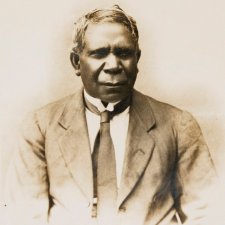
David Unaipon (1872-1967) writer, public speaker and inventor, was a Ngarrindjeri man, fourth of nine children of the evangelist James Ngunaitponi and his wife Nymbulda, both of whom were Yaraldi speakers.
1 portrait in the collection
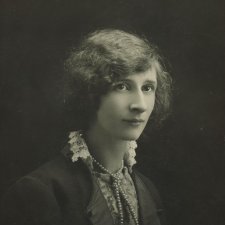
Christian Waller (née Yandell, 1894–1954), printmaker, muralist and stained-glass artist, was born in Castlemaine, Victoria and commenced studying art at the Castlemaine School of Mines in 1905.
1 portrait in the collection

Edward Hammond Hargraves (1816–1891), adventurer and speculator, claimed credit for the discovery of payable goldfields in New South Wales.
1 portrait in the collection
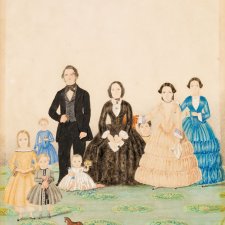
George Billett (also Bellett, Bellette and Billet, 1812–1885) was a farmer and landowner, an early settler of Sorell in Tasmania, and the son of two ex-convicts.
1 portrait in the collection
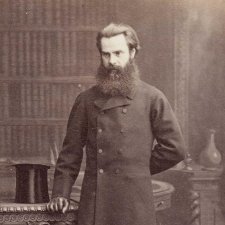
Thomas Woolner, sculptor, studied first with the brothers Henry and William Behnes, painter and sculptor respectively, and later at the Royal Academy, at which he was to become professor of sculpture in his fifties.
5 portraits in the collection

Henry Baynton Somer ‘Jo’ Gullett AM MC (1914-1999), soldier, politician, ambassador, farmer and author, was the son of Sir Henry Gullett, who was one of the Australian official historians of the First World War.
1 portrait in the collection

George Billett (also Bellett, Bellette and Billet, 1812–1885) was a farmer and landowner, an early settler of Sorell in Tasmania, and the son of two ex-convicts.
1 portrait in the collection
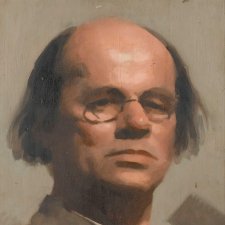
Percy Leason, artist, illustrator and cartoonist, grew up in Victoria's Wimmera region and trained in the rudiments of art in Nhill.
1 portrait in the collection

Edward Riou (1762-1801), naval officer, began his career with the Royal Navy at the age of twelve.
2 portraits in the collection
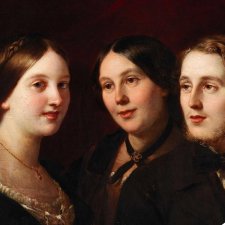
Mary Anne Egan (also Marianne or Marian, née Cheers, 1818–1857), was born in Sydney, the daughter of ex-convicts.
1 portrait in the collection

Isabella Louisa Parry (née Stanley, 1801–1839), amateur artist, community worker and collector, was the daughter of Sir John Stanley, first Baron Stanley of Alderley, a Whig politician and member of the Royal Society.
1 portrait in the collection
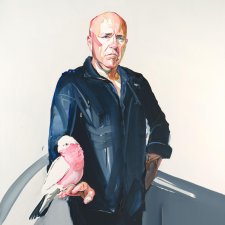
Richard Flanagan (b. 1961) was born in Longford in northern Tasmania, the second youngest of the six children of Archie Flanagan, a primary school principal, and his wife Helen.
1 portrait in the collection

Alison Baily Rehfisch (1900–1975) was born Alison Green in Woollahra, New South Wales, to parents who 'were very interested in painting – in all the arts: music, literature, everything'.
2 portraits in the collection